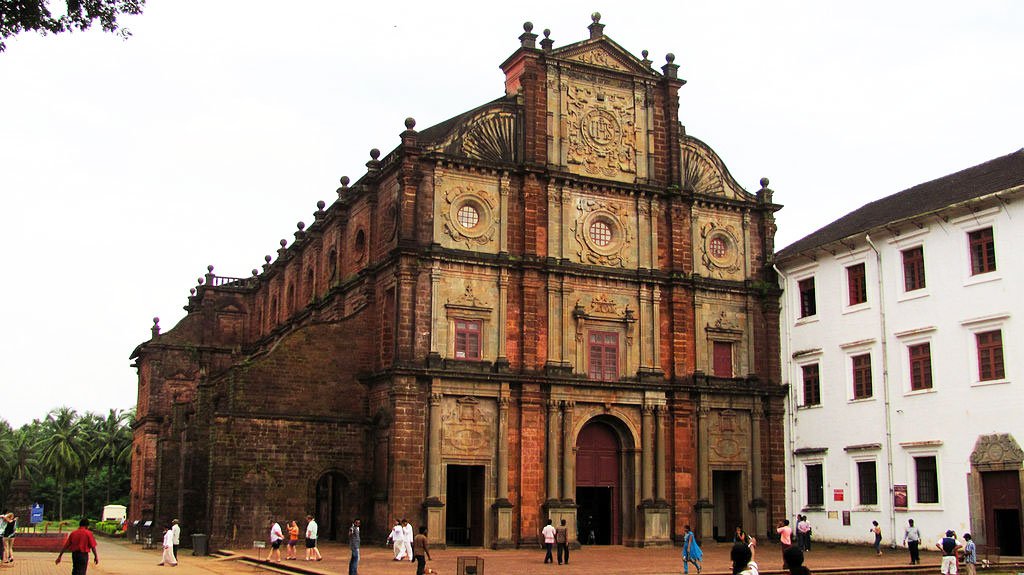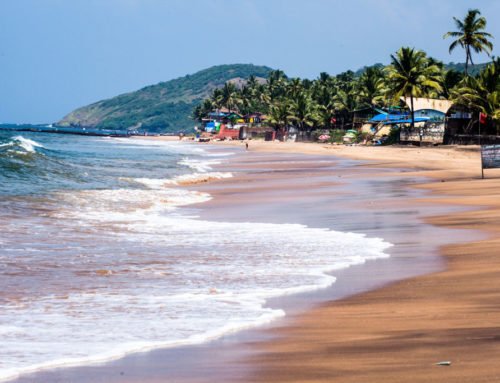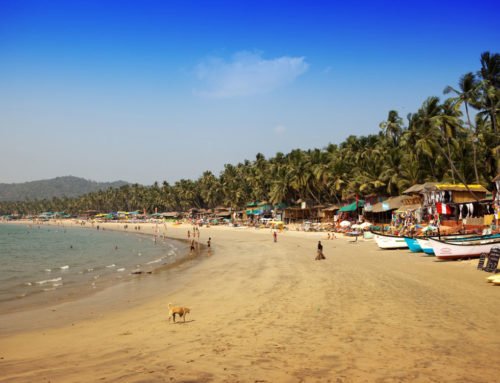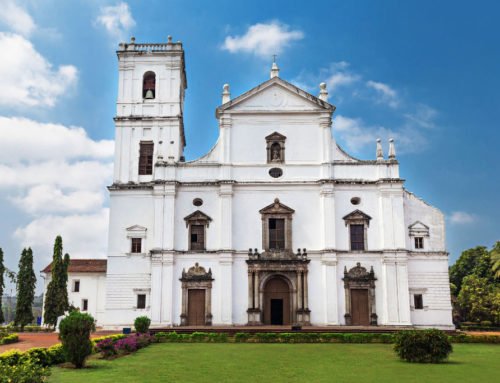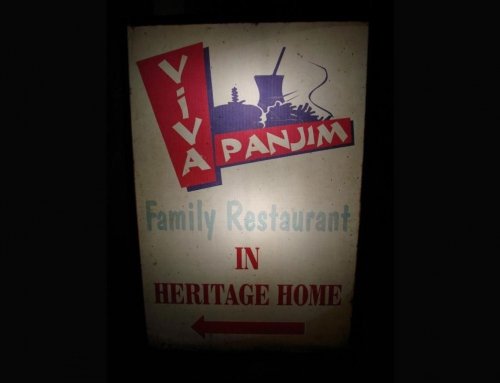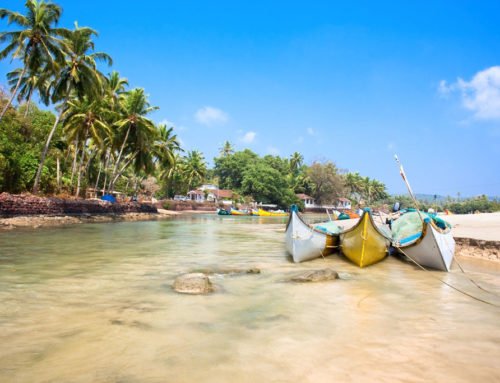Overview
- Features: Basilica holding mortal remains of St Francis Xavier
- Opening Times: 9:00 am to 6:30 pm (Mon-Sat); 10:30 am to 6:30 pm (Sun)
- Best Time to Visit: Weekday mornings
- Duration: 20 to 30 minutes
- Travelled By: Bus
- Cost: Free
- Address: Old Goa, Goa, India
- Type: Church
Author Reviews[display_rating_item_results rating_form_id=”2″ rating_entry_ids=”1″ show_category_filter=”false” show_options=”true” result_type=”star_rating” preserve_max_rating=”true” show_title=”false” show_count=”false” ]
Total Rating: [display_rating_result rating_form_id=”2″ show_count=”false” show_rich_snippets=true] [accordions load=”1″] [accordion title=”User Reviews” last] [display_rating_item_results rating_form_id=”5″ show_options=”true” result_type=”star_rating” preserve_max_rating=”true” show_title=”false” show_count=”true” show_rich_snippets=true] [/accordion] [accordion title=”Add Review”][display_rating_form show_email_input=”true” show_comment_textarea=”true” show_name_input=”true” rating_form_id=”5″] [/accordion] [/accordions]
Summary
The Basilica of Bom Jesus is revered by Roman Catholics all over the world since it houses the mortal remains of Goa’s patron saint, Francis Xavier. It was the first church in South Asia to be granted the status of Minor Basilica in 1946. Built by the Jesuits in 1594, this grand Baroque structure blends Corinthian, Doric, Ionic and composite styles in its magnificent three-tiered façade.
Basilica of Bom Jesus Goa
The Basilica of Bom (the Good) Jesus, a UNESCO World Heritage Site and Goa’s most famous church, is revered by Roman Catholics all over the world since it houses the mortal remains of Goa’s patron saint, Francis Xavier. It was the first church in South Asia to be granted the status of Minor Basilica, by Pope Pius XII in 1946.
Francis Xavier was sent to Goa by the Portuguese king, Dom Joao III. He arrived in May 1542, aged 36, and worked tirelessly over the next few years, converting nearly 30,000 people. St Francis Xavier was also a former pupil of soldier-turned-saint Ignatius Loyola, with whom he founded the Society of Jesus, or the Order of Jesuits since the 17th century. Francis Xavier died while on voyage off the coast of China in 1552, and was temporarily buried on an island.
When his body was dug up three months later to transfer his bones, it showed no signs of decay. A year later, when his remains were enshrined in the Basilica in Goa, his body was still in pristine condition. This was declared a miracle, and in 1622 he was canonised. Expositions of his relics take place every ten years or so, the next one is in 2014.
[singlepic id=1618 w=720 h=560 float=center]
The Basilica of Bom Jesus is one of the oldest churches in Goa, as well as in India. It is considered to be one of the best examples of Baroque architecture in India and reflects the architectural transition to Baroque then taking place in Europe. Built by the Jesuits in 1594, this grand Baroque structure blends Corinthian, Doric, Ionic and composite styles in its magnificent three-tiered façade. This is the only Goan church not covered in lime plaster. Its original coat was removed in 1956, exposing the soft red laterite beneath. Each of the three doorways and six windows is flanked by elegant pillars and basalt detailing.
[singlepic id=1621 w=720 h=560 float=center]
Above the entrance is a basalt stone tablet bearing the Jesuit motto, IHS or Iaeus Hominum Salvator, which means “Jesus the Saviour” in Greek.
[singlepic id=1620 w=720 h=560 float=center]
Apart from the elaborate gilded altars, wooden pulpit and the candy-twist Bernini columns, the interior is very simple. The floor is of marble inlaid with precious stones. The church also holds paintings of scenes taken from the life of St. Francis Xavier.
The wooden pulpit has figures of Jesus and several Evangelists beautifully carved on its sides. An exquisitely carved wooden door leads to the sacristy.
[singlepic id=1623 w=720 h=560 float=center]
The main altar has a gilded reredos and a statue of St Ignatius of Loyala and another of the Infant Jesus. Local craftsmen, used to decorating temples, made plump, typically Hindu looking cherubs on the altar.
[singlepic id=1625 w=720 h=560 float=center]
The tomb, which lies to the right of the main chancel (1698), was the gift of one of the last of the Medicis, Cosimo III, Grand Duke of Tuscany, and took the Florentine sculptor Giovanni Batista Foggini ten years to complete. It is made of three tiers of marble and jasper; the upper tier holds four bronze plaques depicting scenes from the saint’s life. Built in a mixture of Italian and Indian styles, the silver reliquary containing the sacred relics is surmounted by a cross with two angels. The silver casket has three locks, the keys being held by the Governor, the Archbishop and the Convent Administrator.
On the upper level, overlooking the tomb, is the Bom Jesus Basilica Art Gallery, containing the works of the Goan surrealist painter, Dom Martin. You can look down on to the tomb from a small window in the art gallery.
After his canonization, St Francis’s body was shown on each anniversary of his death until 1707, when it was restricted to a few special private expositions. In 1752, the cadaver was again paraded to quash rumours that the Jesuits had removed it. The exhibition now happens every 10 to 12 years (the last exposition was in 2005), when the relics are taken to the Sé Cathedral. His liturgical feast is the third of December. Be prepared for long lines if you visit around his feast day.


